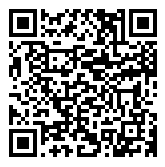In which fields are electroacoustic devices applied
Release time:
Aug 26,2024
Electroacoustic devices, which are devices that convert electrical energy into sound waves or vice versa, are widely applied in various fields due to their versatility and effectiveness.
In which fields are electroacoustic devices applied
Electroacoustic devices, which are devices that convert electrical energy into sound waves or vice versa, are widely applied in various fields due to their versatility and effectiveness. From entertainment to healthcare, electroacoustic devices play a crucial role in enhancing the quality of our lives. In this article, we will explore some of the key fields in which electroacoustic devices are commonly used.
Entertainment industry
One of the most well-known applications of electroacoustic devices is in the entertainment industry. From concert speakers to headphones, electroacoustic devices are essential for delivering high-quality sound to audiences. In concert venues, powerful speakers and amplifiers are used to ensure that every note and beat can be heard clearly by the audience. In recording studios, microphones and speakers are used to capture and reproduce sound with precision. In home entertainment systems, speakers and headphones provide immersive audio experiences for listeners.
Communication systems
Electroacoustic devices are also widely used in communication systems. Telephones, intercoms, and public address systems all rely on electroacoustic devices to transmit sound effectively. Microphones are used to capture sound and convert it into electrical signals, which are then transmitted through wires or wirelessly to speakers or headphones for reproduction. In conference rooms, microphones and speakers are used to facilitate clear communication among participants. In public spaces, public address systems use speakers to broadcast important announcements to large crowds.
Healthcare industry
In the healthcare industry, electroacoustic devices play a crucial role in medical devices and equipment. Ultrasound machines, for example, use transducers to convert electrical signals into sound waves that can image internal organs and tissues. Hearing aids use microphones and speakers to amplify sound for individuals with hearing loss. Heart rate monitors use sensors and speakers to monitor and alert patients to changes in their heart rate. Electroacoustic devices are also used in surgical equipment, such as ultrasonic scalpels, which use high-frequency sound waves to cut tissue with precision.
Automotive industry
In the automotive industry, electroacoustic devices are used in car audio systems, navigation systems, and hands-free communication systems. Car speakers and amplifiers are used to deliver high-quality sound to passengers. Microphones and speakers are used for hands-free calling and voice commands. Ultrasonic sensors are used for parking assistance and collision avoidance systems. Electroacoustic devices are also used in car alarms, warning signals, and entertainment systems to enhance the driving experience and safety of passengers.
Military and defense
In the military and defense sector, electroacoustic devices are used in a wide range of applications, including communication systems, surveillance systems, and weapon systems. Military radios use microphones and speakers to facilitate communication among soldiers on the battlefield. Acoustic sensors are used for detecting and locating enemy submarines and ships. Sonar systems use sound waves to detect underwater objects and threats. Acoustic weapons use sound waves to incapacitate or deter enemies.
Conclusion
In conclusion, electroacoustic devices are applied in a wide range of fields, from entertainment to healthcare, communication, automotive, and military industries. Their versatility and effectiveness make them essential for delivering high-quality sound, facilitating communication, enhancing medical diagnostics and treatment, improving automotive safety and convenience, and strengthening military defense and surveillance capabilities. As technology continues to advance, we can expect to see even more innovative applications of electroacoustic devices in the future.
Related News
Aug 26,2024
Aug 26,2024
What are the characteristics of flow sensors
Aug 26,2024
What are the characteristics of sound sensors
Aug 26,2024


